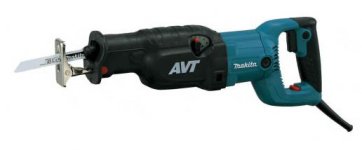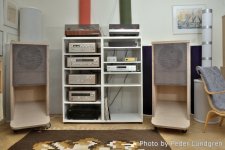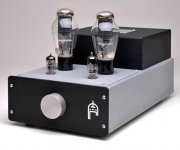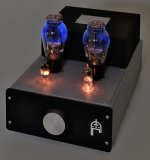Long time ago I was working as a photographer so image quality is important to me. Thank you for your support.
when I started the project, I drew the templer measurements and the axiom 201 measurements with cad ... obviously, the speaker did not fit into the cabinet because the magnet banged against the background, moreover it was very difficult to position in the first chamber the layer of acoustic insulation (recommended with a thickness of 5 cm) without being crushed in turn by the magnet.
my solution - only designed - was to think of increasing the thickness of the front baffle, in order to gain the space I was looking for to let the magnet enter without digging the wood, but there was still a crushing of the acoustic insulation, even if less .
probably, you will have to countersink the hole on the inner side of the baffle thicker so that it does not generate a hindrance of the sound emission towards the chamber, but at this point it may be better to keep the thickness of the baffle unchanged and enlarge the chamber, with an elongation in the frontal direction, by those centimeters necessary to fit the magnet and insulation without overlapping or crushing.
since the cabinet seems very "tolerant" to the variations of the measures, can lengthening the room be a valid solution in your opinion, or is it better to increase the thickness of the baffle?
my solution - only designed - was to think of increasing the thickness of the front baffle, in order to gain the space I was looking for to let the magnet enter without digging the wood, but there was still a crushing of the acoustic insulation, even if less .
probably, you will have to countersink the hole on the inner side of the baffle thicker so that it does not generate a hindrance of the sound emission towards the chamber, but at this point it may be better to keep the thickness of the baffle unchanged and enlarge the chamber, with an elongation in the frontal direction, by those centimeters necessary to fit the magnet and insulation without overlapping or crushing.
since the cabinet seems very "tolerant" to the variations of the measures, can lengthening the room be a valid solution in your opinion, or is it better to increase the thickness of the baffle?
Buona sera landrupp, last year I spoke with a loudspeaker constructor here in Poland and asked him similar questions to your ideas above. I post his answer below from memory (this was a phone call). In my oppinion his recommendations are a bit too purist but still interesting.
But back to my quotes:
Landrupp, you mentioned countersinking the hole. I think this means the hole will not be cylindrical but conical, with the internal diameter larger. This should solve the problem IMHO. I would also add that I read somewhere that increasing the volume of the first chamber before the horn fortifies the midbass, so there are consequences in the tonality too, not only in the dB rating itself. The other version would be with two baffles. I have seen this solution before. This means an internal baffle with a larger hole that is fixed (glued with the rest of the elements of the cabinet) and a second, rectantular baffle that holds the Axiom and is screwed to the cabinet with four or eight nice looking screws. This mobile baffle solution would allow you to swap drivers without massacring the cabinet. You just need to make another baffle for your other driver and you change the whole square with just a hex key.If you need to stick with an existing cabined design but the driver with its magnet is too deep, you can either move the driver forward (thicker baffle) or sculpt in the wall behind it for the magnet. Both solutions are not good since they induce efficiency losses.
Version thick baffle: if the baffle material is thick, then it creates an acousitic "shadow" (that prevents the membrane from radiating its full energy backwards). In essence, the driver is in a "periscope" like tube if you accept this exageration. This diminishes the efficiency of the whole speaker.
But back to my quotes:
This last recommendation goes against Chris Templer's solution. I asked Chris how he sculpted into an already made cabinet. He answered me with this picture in the mail:If you chose to sculpt through the wall just behind the magnet, you should absolutely not go all the way to perforation. any portion of magnet and/or sealing material (foam?) that protrudes into the next fold of the horn will again diminish efficiency. If you absoutely need to do both (thicker baffle and sculpting) at leas make sure you don't perforate the wall into the next horn fold, just dig a little.
So, it's conceptual art or brutalism, a hard choice, both are seductive.This tool and a lot of pain:
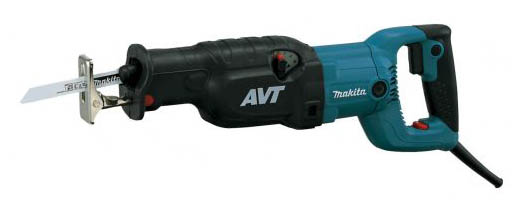
Attachments
what no chamfer on on the backside of the baffle?
Good question but I do not know the answer on this. Remenber that the drivers are changed to Klangfilm 10,5" drivers on an smaller extra baffle of solid oak 24mm thick. That gives me a total of 62mm thick baffle where the first baffle has a larger opening.
Last edited:
The recip saw. One of my favourate tools. Great for all sorts of destruction. Not a tool for fine work.
dave
Just to make it clear, the drivers in my Coral Beta-10 horn cabinets are the Klangfilm KL L-307 with that extra baffle in solid oak. With the two baffles the construction is very rigid and allows for even faster transients together wit the thin and stiff paper cone on the Klangfilm. Nothing I ever listen to comes close in speed than this combination. Great not only for percussion but also for other sources like piano and guitar. As you can se at the front, the extra baffle sticks out a little bit outside the original cabinet but still it looks nice to me.
Attachments
Thank you for this clarification, now I see it when I look at the photo carefully. Very nice woodwork, by the way. How is the second baffle attatched? is it a permanent attachment like glue?
The second baffle is attached with screws. If I like to switch back it is ease to change the set up for another driver. The sound is of course the most important thing but also looks. Many constructions sounds good but the design and building materials is less desirable. I want this type of items to look like furniture if at all possible.
I imagine that since the diameter of the klangfilm is smaller (10.5 "vs 12"), you did not need to touch the edge of the hole of the first baffle, but you simply applied the external baffle on the existing one, obtaining a hole smaller inside a bigger one with sufficiently distant edges does not prevent the diffusion of the sound from the back of the driver ... did I guess right?
however it is a really great job, I'm sorry not to be able to listen to it, I would have brought you a good wine and some "tiramisú" to thank you.
(◠‿◕)
however it is a really great job, I'm sorry not to be able to listen to it, I would have brought you a good wine and some "tiramisú" to thank you.
(◠‿◕)
Thank you landrupp and rokokiki for your kind words. Landrupp you are right about the latest adjustments now with the Klangfilm KL L-307 and the sounds is in my ears wonderful. I listen to jazz in smaller settings like trios, song, cello and other analogue sources. If I need extra and lower bass I use my two old Audax 15" subwoofers in my O.B.
Thank you landrupp and rokokiki for your kind words. Landrupp you are right about the latest adjustments now with the Klangfilm KL L-307 and the sounds is in my ears wonderful. I listen to jazz in smaller settings like trios, song, cello and other analogue sources. If I need extra and lower bass I use my two old Audax 15" subwoofers in my O.B.
hai un'idea approssimativa della gamma di frequenze che avevi ottenuto con l'assioma montato sulla tua tromba?
have you also experimented with ss amplifiers? I have an Einstein the amp that I would like to use with the axioms, even though the pot with successive power steps would make it difficult for me to listen at low volume ...
besides, I have a room of 16sqm where to play the horn (for now), maybe it's too much sound for too little space ...?
besides, I have a room of 16sqm where to play the horn (for now), maybe it's too much sound for too little space ...?
I had one tube-amp built from an old Telefunken Opus 2550. That little amp produced only 2,5W but was plenty for my room about the size of your room. If I play on my vintage Sony´s it is more difficult to adjust the right level.
hai un'idea approssimativa della gamma di frequenze che avevi ottenuto con l'assioma montato sulla tua tromba?
Translation:
do you have an idea (even if only rough) of the range of frequencies you obtained with the axiom mounted on your horn?
landrupp, regarding Solid State:
I have this intuition that this speaker will be quite picky with the amplification. Having the same cabinets (enlarged coral 10 horn, albeit with thinner walls than 1669EI's build). I find them *extremely* efficient.
To the point where they will force a change in amplification for me. I am looking for something that keeps the sweetness AND has bass output.
I tried 2x100W at 8 ohm solid state and (sonic taste aside) I find that I have to play it with the pot turned just 8 or 10 milimeters into its rotation.
Same result with an Audio Innovations Series 300 MK1 (2x12 W): I need to have it almost turned to a minimum and actually even one milimeter of shift on the potentiometer gives very audible results. I probably always play it within the first of the 12 watts!
I tried an upgraded Music Angel (probably a clone of Lampizator's upgrades) with 300B and this was the best pairing, if was hard to part with that amplifier when I gave it back.
regarding frequency range, I quote C. Templer:
"I found the 201 in the Coral cabinet has a very flat response down to 30 Hz then it drops off sharply." Not sure what is 1669EI's experience, 30hz sounds fun to me.
I have this intuition that this speaker will be quite picky with the amplification. Having the same cabinets (enlarged coral 10 horn, albeit with thinner walls than 1669EI's build). I find them *extremely* efficient.
To the point where they will force a change in amplification for me. I am looking for something that keeps the sweetness AND has bass output.
I tried 2x100W at 8 ohm solid state and (sonic taste aside) I find that I have to play it with the pot turned just 8 or 10 milimeters into its rotation.
Same result with an Audio Innovations Series 300 MK1 (2x12 W): I need to have it almost turned to a minimum and actually even one milimeter of shift on the potentiometer gives very audible results. I probably always play it within the first of the 12 watts!
I tried an upgraded Music Angel (probably a clone of Lampizator's upgrades) with 300B and this was the best pairing, if was hard to part with that amplifier when I gave it back.
regarding frequency range, I quote C. Templer:
"I found the 201 in the Coral cabinet has a very flat response down to 30 Hz then it drops off sharply." Not sure what is 1669EI's experience, 30hz sounds fun to me.
Well, i used a filter, that cut at 100Hz, for a while but the drivers sound the best without filter. The 300b tube amp got a volume control so no need for a pre.amp. In my view simplicity is the best way to go. No filter, no pre.amp, and less cables.The tube amp, PSET is rated at 18W with 300b and about 3W with 2A3 tubes.
off topic: 1669EI – that is a really good looking amplifier (like the rest of your gear)!!!
I know sound is what we are after but I have to confess, if a piece of kit looks bad, I simply cannot even consider getting it. There are some tube amps that are simply horrendously hideous. I have a bitter place in the dark side of my heart for complicated mixes of lacquered wood and shiny chrome with mirror-polished transformer housings and rounded woooden buttons, they are so horrible that I don't even care how they sound. Basically a whole different thread could be started with pretentious-looking amps. On November 1, when all the Polish people go to visit the graves of their families, some of thse graves look better than the designs I mentioned, with lamps instead of tubes and tombstones as amps.
I know sound is what we are after but I have to confess, if a piece of kit looks bad, I simply cannot even consider getting it. There are some tube amps that are simply horrendously hideous. I have a bitter place in the dark side of my heart for complicated mixes of lacquered wood and shiny chrome with mirror-polished transformer housings and rounded woooden buttons, they are so horrible that I don't even care how they sound. Basically a whole different thread could be started with pretentious-looking amps. On November 1, when all the Polish people go to visit the graves of their families, some of thse graves look better than the designs I mentioned, with lamps instead of tubes and tombstones as amps.
- Home
- Loudspeakers
- Full Range
- Cabinets for Full Range Goodmans Axiom 201
